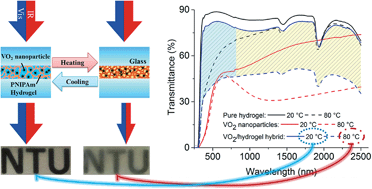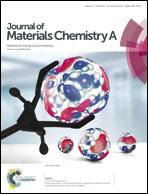VO2/hydrogel hybrid nanothermochromic material with ultra-high solar modulation and luminous transmission
Abstract
Although vanadium dioxide (VO2) is the most well studied thermochromic material, it is limited by its intrinsic properties of low solar modulation (ΔTsol) and low luminous transmission (Tlum) arising from the high luminous absorption of VO2 at both high and low temperature and its increased reflectivity at low temperature. A range of approaches, including nanothermochromism, nanoporosity, moth eye nanostructuring, and antireflection, have been deployed, but none of them, by experiment or by simulation, could reach even half the value of ΔTsol (∼35%) with a high average Tlum (>60%) as produced by our novel fabricated VO2/hydrogel hybrid. The hydrophilic-to-hydrophobic phase transition of PNIPAm at ∼30 °C predominantly controls the luminous modulation, while monoclinic-to-rutile phase transition of the VO2 nanoparticles at ∼68 °C mainly contributes to the infrared modulation. This is the first reported hybrid integrating inorganic with organic thermochromic materials; it offers unprecedentedly good thermochromic properties and thus opens up a new research direction.


 Please wait while we load your content...
Please wait while we load your content...